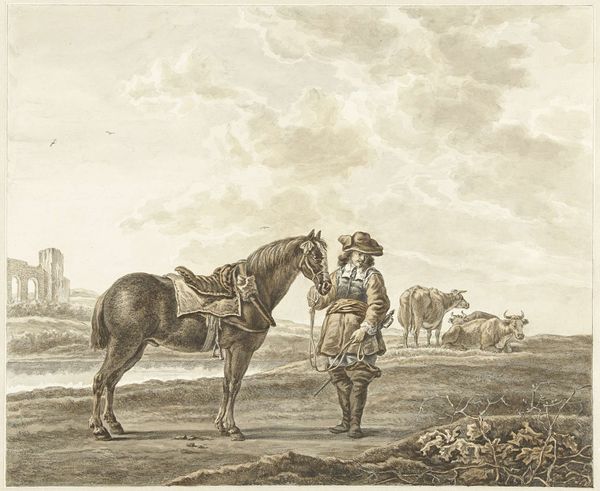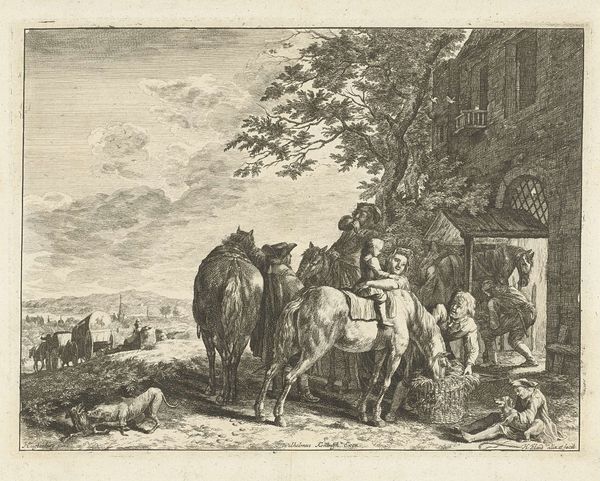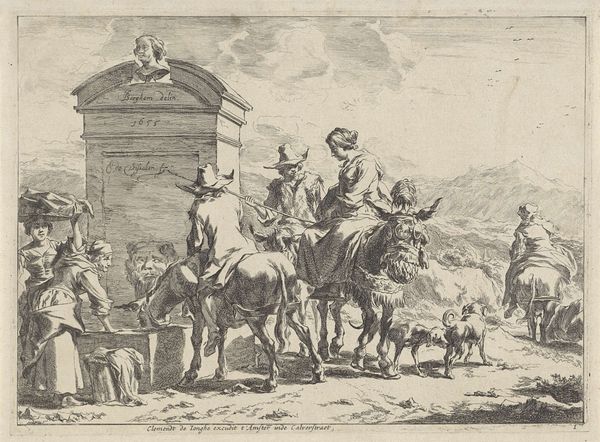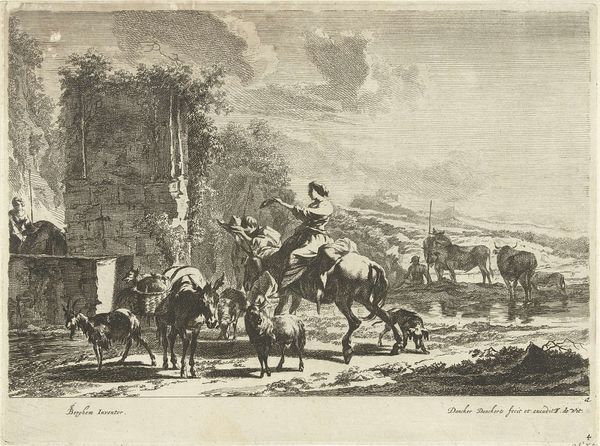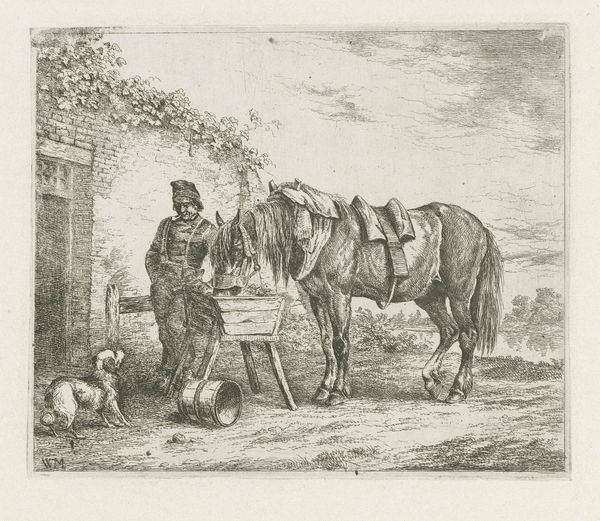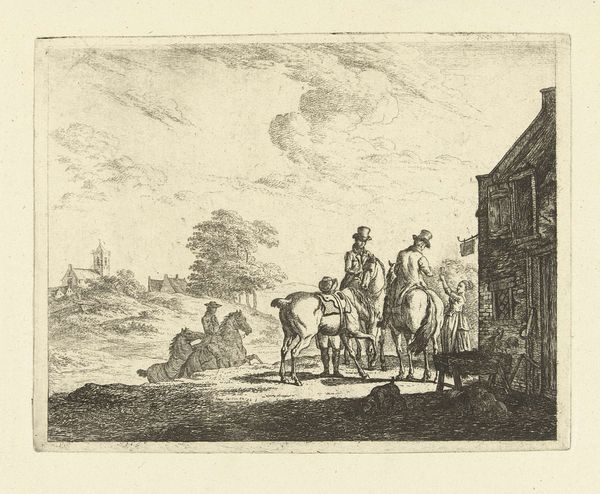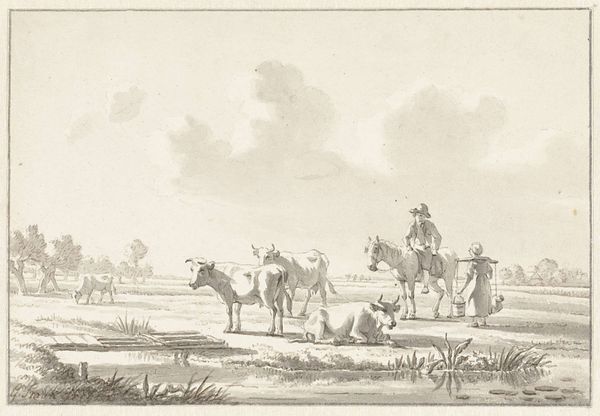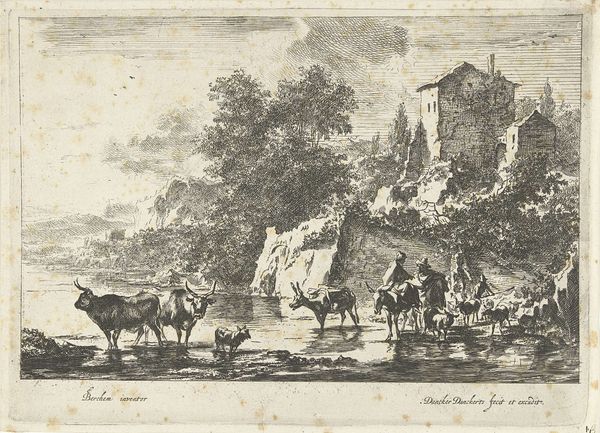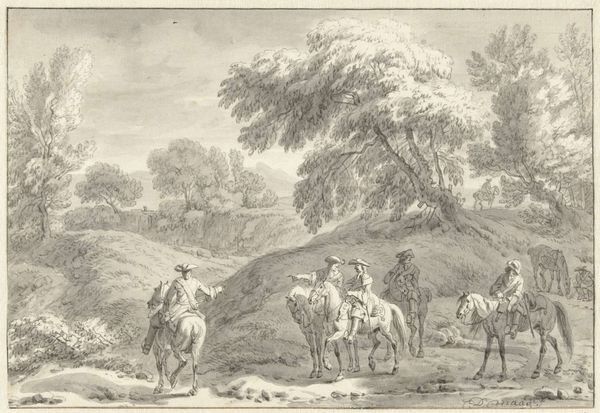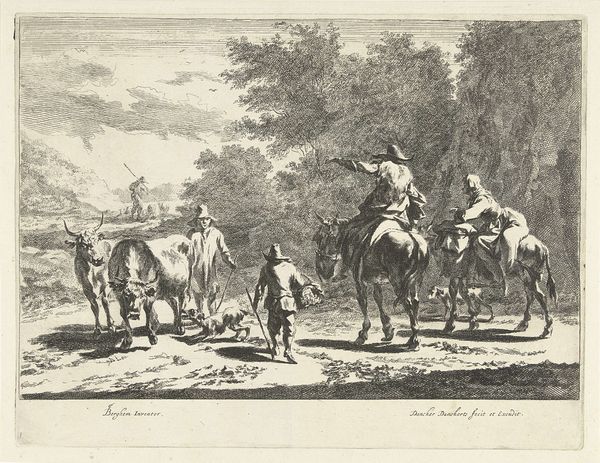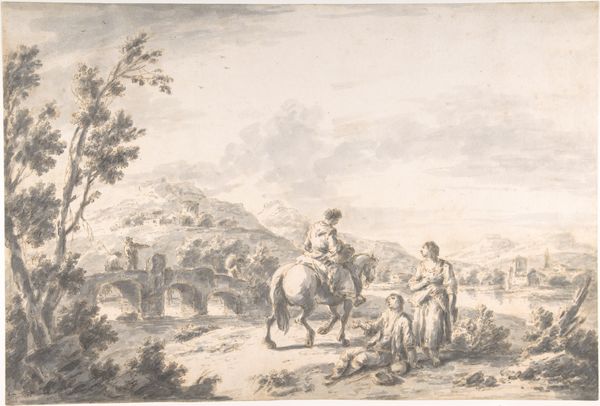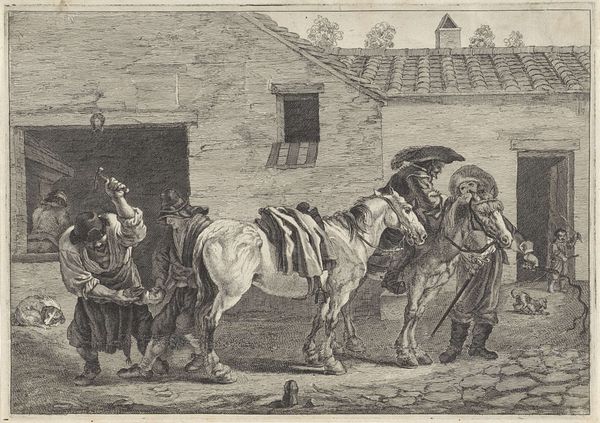
watercolor, pencil
#
dutch-golden-age
#
pencil sketch
#
landscape
#
watercolor
#
romanticism
#
pencil
#
horse
#
watercolour illustration
#
genre-painting
Dimensions: height 219 mm, width 294 mm
Copyright: Rijks Museum: Open Domain
Editor: Here we have Pieter Frederik van Os's "Man met paard, rustend bij een herberg," or "Man with Horse Resting by an Inn," created in 1839, using watercolor and pencil. It’s a very gentle scene. What particularly stands out is the clear depiction of the materials that the figures wear and use - almost a celebration of the everyday objects. What do you make of it? Curator: It's interesting you're drawn to the depiction of materials. Notice how van Os meticulously renders the texture of the stonework, the grain of the wood in the barrel the man sits on, and even the animal’s harness. These are all commodities, aren’t they? Consider the broader context: 1839 marks a period of increased industrialization. Do you see van Os's work as romanticizing rural life and craftsmanship amidst the rise of mass production? Editor: That's a compelling point! I hadn't thought about the social context in terms of industrialization, but it definitely reframes the way I see the artwork. It almost feels like a quiet resistance to the changing world. Curator: Exactly. The work's value isn't solely in the picturesque scene, but also in what it tells us about the production, the labour, and ultimately, the consumption associated with that era. Observe how each material object—the jug, the clothing, the horse tack— speaks to specific forms of labour and their related societal structures. Is there an implicit social commentary, do you think, regarding the disappearing rural trades? Editor: I think there might be! Now I see the drawing less as just a pretty scene, and more as a document of a particular material culture on the verge of change. I'll never look at watercolors the same way. Curator: Precisely! By focusing on the materiality of art, we unravel connections to the wider socioeconomic factors influencing artistic production and its meaning. That’s what is key.
Comments
No comments
Be the first to comment and join the conversation on the ultimate creative platform.
